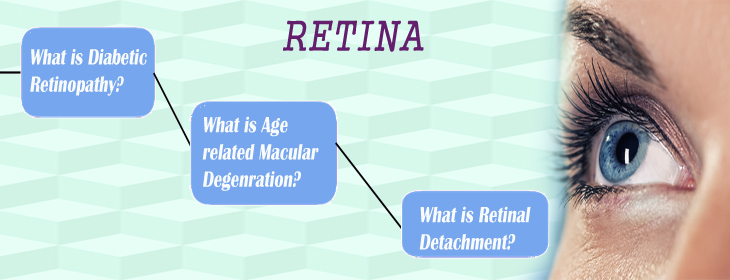
Perhaps you have just heard that you or a loved one has age-related macular degeneration, also known as AMD. If you are like many people, you probably do not know a lot about the condition or understand what is going on inside your eyes.
AMD is a common eye condition among people age 50 and older. It is a leading cause of vision loss in older adults. It gradually destroys the macula, the part of the eye that provides sharp, central vision needed for seeing objects clearly.
In some people, AMD advances so slowly that vision loss does not occur for a long time. In others, the disorder progresses faster and may lead to a loss of vision in one or both eyes. The vision loss makes it difficult to recognize faces, drive a car, read, print, or do close work, such as sewing or fixing things around the house.
Despite the limited vision, AMD does not cause complete blindness. You will be able to see using your side (peripheral) vision.
The macula is made up of millions of light-sensing cells that provide sharp, detailed central vision. It is the most sensitive part of the retina, which is located at the back of the eye. The retina quickly turns light into electrical signals and then sends these electrical signals to the brain through the optic nerve. Next, the brain translates the electrical signals into images we see. If the macula is damaged, fine points in these images are not clear. The picture is there, but the fine points are lost.
AMD usually occurs in people who are age 50 and older. As people get older, the risk increases. Other risk factors include the following:
Some lifestyle choices, like smoking, are linked to AMD although it remains unknown if altering any of these would alter the impact of AMD on an individual.
Nevertheless, the following choices may have an impact on AMD and certainly promote healthy living, including the following:
The early and intermediate stages of AMD usually start without symptoms. Only a comprehensive dilated eye exam can detect AMD. The eye exam may include the following:
There are two forms of AMD: dry and wet. Either form can advance and cause severe vision loss.
Dry AMD is the most common form of AMD in its early or intermediate stages. It occurs in about 90 percent of the people with the condition.
Dry AMD happens when the light-sensitive cells in the macula slowly break down, gradually blurring central vision in the affected eye. As dry AMD progresses, you may see a blurred spot in the center of your vision. Your eye care professional may call this "geographic atrophy."
Over time, central vision in the affected eye can be slowly lost as less of the macula works.
Dry AMD has few symptoms in the early stages. It is important to have your eyes examined regularly before the disease progresses.
In the later stages, blurred vision is the most common symptom of dry AMD. Objects also may not appear to be as bright as they used to be.
As a result, you may have trouble recognizing faces. You may need more light for reading and doing other tasks. Both eyes can have dry AMD or one eye can be affected first.
Drusen are another early sign of dry AMD. They are yellow deposits under the retina. They can be small or large in size.Drusen alone do not usually cause vision loss. But people with large drusen are at risk of developing a more severe form of AMD, which results in severe vision loss.
Dry AMD has three stages, all occurring in one or both eyes. These stages are defined in part by the size and number of drusen under the retina:
Wet AMD affects about 10 percent of all people with AMD. This type, however, is more severe than the early and intermediate stages of the dry form.
Wet AMD happens when abnormal blood vessels behind the retina start to grow under the macula known as choroidal neovascular membrane (CNVM). These new blood vessels can be fragile and leak blood and fluid. The blood and fluid cause the macula to swell and damage occurs rapidly. The damage may also cause scarring of the retina.
© 2015 Drushti Eye Institute Pvt Ltd. All Rights Reserved
Developed by - Regal Soft India